Media + Publications
Maker-Centered Learning Playbook for Early Childhood Education
Since 2012, the Agency by Design research team at Project Zero has explored the promises, practices, and pedagogies of maker-centered learning in a variety of settings. This initial research produced a flexible pedagogical model that supports young people in becoming sensitive to design and seeing themselves as the creators of their worlds. Beginning in 2018, the Agency by Design research team began working with a cohort of early childhood educators in Hong Kong on a pilot study to adapt the Agency by Design framework for young learners. The result of this exciting work is the Maker-Centered Learning Playbook for Early Childhood Education. This playbook includes lessons learned from the study, pictures of practice, and a host of educator tools and resources designed to support the development of young students’ maker capacities while also nurturing other generative cognitive dispositions and habits of mind at this early stage of learning and development.
This resource is available in hard copy on Amazon.

Maker-Centered Learning: Empowering Young People to Shape Their Worlds
The Agency by Design guide to implementing maker-centered teaching and learning
Maker-Centered Learning provides both a theoretical framework and practical resources for the educators, curriculum developers, librarians, administrators, and parents navigating this burgeoning field. Written by the expert team from the Agency by Design initiative at Harvard's Project Zero, this book
- Identifies a set of educational practices and ideas that define maker-centered learning, and introduces the focal concepts of maker empowerment and sensitivity to design.
- Shares cutting edge research that provides evidence of the benefits of maker-centered learning for students and education as a whole.
- Presents a clear Project Zero-based framework for maker-centered teaching and learning
- Includes valuable educator resources that can be applied in a variety of design and maker-centered learning environments
- Describes unique thinking routines that foster the primary maker capacities of looking closely, exploring complexity, and finding opportunity.
A surge of voices from government, industry, and education have argued that, in order to equip the next generation for life and work in the decades ahead, it is vital to support maker-centered learning in various educational environments. Maker-Centered Learning provides insight into what that means, and offers tools and knowledge that can be applied anywhere that learning takes place.

Agency by Design: Empowering Young People to Shape their Worlds
"Agency by Design: Empowering Young People to Shape their Worlds" explores the ways in which educators can develop teaching strategies that support student agency through maker-centered learning experiences.
Video by Alex Coppola

Take Apart Project
Things Come Apart, by Todd McLellan provided some inspiration for educators from Park Day School to explore the complexities of everyday objects with their second grade learners. In this picture of practice essay educator Jeanine Harmon shares the project.
Featured photo by Jaime Chao Mignano
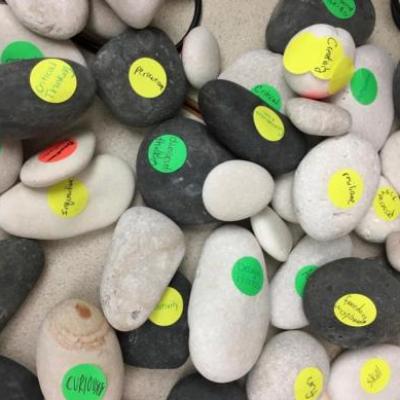
Identifying What Matters
In this essay, leaders of the Agency by Design Pittsburgh network Peter Wardrip, Jeffrey Evancho, and Annie McNamarra describe their process of pursuing documentation and assessment strategies for maker-centered learning that are based on the values educators bring to their work in schools and other settings. Using the metaphor of big rocks and little rocks as introduced by Steven Covey, the authors describe the process of identifying one’s values and documenting and assessing student learning from the perspective of one’s values. They then articulate the lessons they have learned and their suggestions for moving forward. The core findings that emerge from this work are: (a) identifying one’s values is challenging, (b) documentation requires practice, (c) one’s values are linked to one’s content, and (d) visibility supports measurement.

Exploring Complexity: A Capacity of Sensitivity to Design
Educator Gus Goodwin shares how his students engage with the Agency by Design capacities during a design and engineering challenge, specifically highlighting the capacity Exploring Complexity.
Video by Alex Coppola
Featured photo by Jaime Chao Mignano
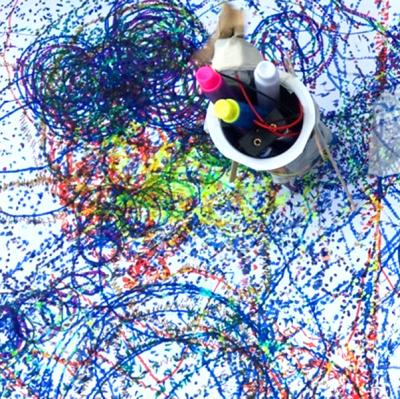
Developing a Sensitivity to the Design of Teacher Learning Communities
A community of teachers and researchers work together in Cambridge, MA and Temescal, CA to learn more about how students understand design in the world.

Parts, Purposes, Complexities in a Technology Classroom
High School technology students in Darlease Monteiro’s class use Parts, Purposes, Complexities to analyze website apps prior to designing their own.

Building Students’ Sense of Agency
At the root of problem solving is a sense of agency. The impetus to engage with a problem starts with a sense that it's possible to reshape something by directing one's actions purposefully. In this article, Agency by Design researchers Shari Tishman and Edward Clapp explore the ways in which practices connected to maker-centered learning increase students' sense of being capable of shaping their world through tinkering, designing, building, and redesigning objects or systems. They identify skills teachers should nurture to increase students’ feeling of agency, build students’ sensitivity to design and empower them to find and solve problems.
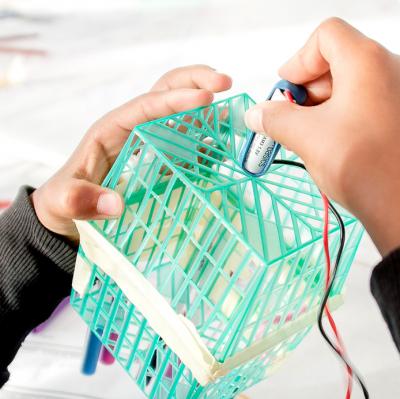
Maker Empowerment: A Concept Under Construction
Agency by Designer project Director Shari Tishman introduces the concept of “maker empowerment” as a potential outcome of maker learning experiences.

Understanding Agency Part II: Putting an Abstract Concept into Action
AbD researchers describe how their use of agency “vignettes” help them gain new understandings around the concept of agency.

Looking Closely: A Capacity of Sensitivity to Design
Students from King Middle School in Portland, Maine, explain the importance of looking closely in a maker-centered classroom.
Video by Alex Coppola
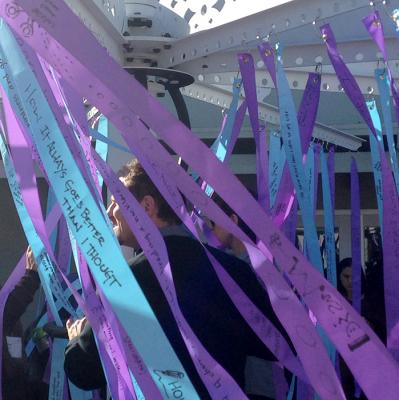
The Maker Mind: Taking a Closer Look at the Way Makers’ Minds Work
How do makers make meaning of their making? What are the cognitive capacities associated with making? Flux Foundation artists and educators Jess Hobbs and Catie Magee introduce us to the “maker mind.”
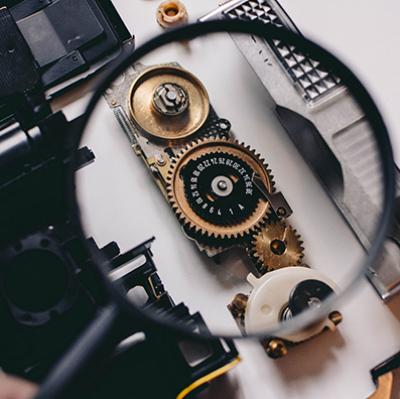
The Inquiry Cycle in Action
The Agency by Design Inquiry Cycle has been designed to support educators in the processes of designing, documenting, assessing, and reflecting on maker-centered learning. This tool was collaboratively developed over time, and formally prototyped with cohorts of maker educators in two locations: Oakland, California, and Pittsburgh, Pennsylvania. In this paper, Agency by Design researchers Jessica Ross and Edward P. Clapp loosely use the structure of the Inquiry Cycle to describe the iterative process of developing this tool, along with some suggested implications for practice. Throughout the piece, we share the experiences of our teacher partners as they grappled with this tool—tweaking, hacking, and remixing it—as they explored its potential for designing, documenting, assessing, and reflecting upon their work in the maker-centered classroom.

Maker Empowerment and Resourcefulness
A practice that promotes the capacity of looking closely is the Elaboration Game. This picture of practice essay shares a version that was adapted by educator Tatum Omari for a group of young learners to examine a tortilla press during their unit of study about bread making.

Maker – Person, Identity, or Culture?
Agency by Design project manager Jen Ryan examines the use of the word maker and offers an alternative reframing for an emerging field.
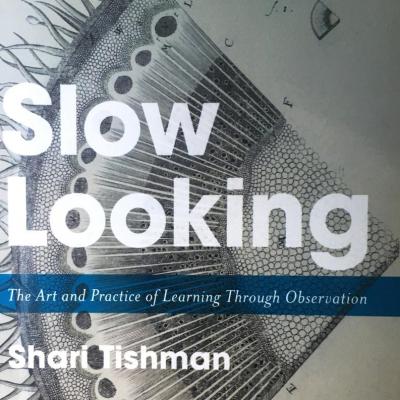
Slow Looking: The Art and Practice of Learning Through Observation
Slow Looking provides a robust argument for the importance of slow looking in learning environments both general and specialized, formal and informal, and its connection to major concepts in teaching, learning, and knowledge. A museum-originated practice increasingly seen as holding wide educational benefits, slow looking contends that patient, immersive attention to content can produce active cognitive opportunities for meaning-making and critical thinking that may not be possible though high-speed means of information delivery. Addressing the multi-disciplinary applications of this purposeful behavioral practice, this book draws examples from the visual arts, literature, science, and everyday life, using original, real-world scenarios to illustrate the complexities and rewards of slow looking.
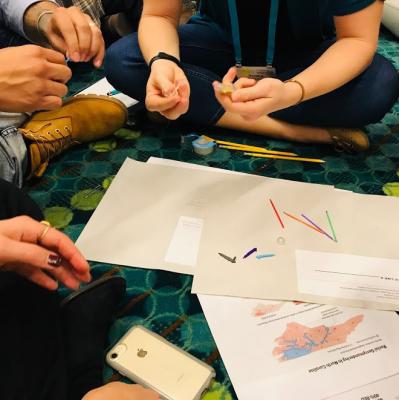
Taking Apart to Build Stories of Change
This piece is based on a workshop titled “Taking Apart Racism: Using Maker-Centered Practices to Break Down Systems of Oppression,” led by Jaime Chao Mignano and Mark Perkins at the National Association of Independent Schools People of Color Conference (PoCC).
Like a lot of educators, I want my students to be empowered to impact the world around them. I want them to have social and political agency in a sense that is perfectly aligned with what Agency by Design means by agency—that is, skills and tools in combination with intention and impulse to action. When I task my students with dismantling systems of oppression, how do they know what that means? Do they feel ready to enact it? And how can I be a support?
This was the seed of a workshop for this year’s National Association of Independent Schools People of Color Conference (PoCC), a gathering of thousands of educators from around the United States to explore ideas and share experiences around equity and justice in our schools and lives. My colleague, Mark Perkins (Media and Theater Coordinator), and I wondered what insights we could offer by putting Take Apart practice in service to racial justice education. I was nervous to try to build under the conference throughline “Anti-Racist Teaching Tools” - the stakes felt so high. We had an inkling, though, that combining the enthusiastic engine of taking stuff apart with the resonant act of creating stories that reimagine existing narratives of power could be an important experiment.
Mark and I built a workshop we call “Taking Apart Racism: Using Maker-Centered Practices to Break Down Systems of Oppression.” The heart of the workshop is the idea that looking closely and exploring the complexity of an object can create a bridge of metaphor that helps us understand a system of racial oppression. If we build the connection between these two systems—the system of the object and the system of oppression—then we can see the oppressive system in a new light and probe new possibilities.

Exploring Complexity in Qualitative Research: Designing a System for Collaborative Analysis
Agency by Design research assistant Sarah May explores the complex nature of working with qualitative data based on her experiences collaboratively coding and analyzing AbD’s interview transcripts.

A Take Apart Toolkit: What we learn from unmaking
This piece is the first in a series of Field Notes which can be read as a Take Apart Toolkit of sorts, including how to use Take Aparts to engage in deep analysis, to increase accessibility, to explore the complexity of less tangible objects and systems, and more.
Cracking the case of a computer always inspires a small gasp—an intake of breath that is part fear and part wonder. And it really is beautiful in there.
 For that matter, so are the guts of a blender or a blow dryer or an FM radio. When I first started using Take Apart practices in the classroom, it was for the simple unwrapping of the incredible miniature landscape inside of the familiar objects that we think we understand most intimately. The view from the inside is a powerful and nearly instantaneous entrypoint into what Agency by Design names a sensitivity to design—that the world around us is designed and made by humans like us, and can be remade, too.
For that matter, so are the guts of a blender or a blow dryer or an FM radio. When I first started using Take Apart practices in the classroom, it was for the simple unwrapping of the incredible miniature landscape inside of the familiar objects that we think we understand most intimately. The view from the inside is a powerful and nearly instantaneous entrypoint into what Agency by Design names a sensitivity to design—that the world around us is designed and made by humans like us, and can be remade, too.
Over time, I came to think of a Take Apart a perfect first dip into maker-centered learning for learners of any age or context because it requires very little prior knowledge. When I’m guiding a group of learners, I like to ask: Look at the object in front of you—do you know its name? Have you ever used it? Most of us can stare down a clock with some level of confidence and firsthand experience. We have a connection to an object we recognize and ready access to what we already know about how it is used, some alternative forms it may have, and even some ideas about how it works. We have memories that may connect it to our home, the Kindergarten teacher who taught us how to tell time, the last clock we touched. A Take Apart has an emotional locomotion that is hard to resist.
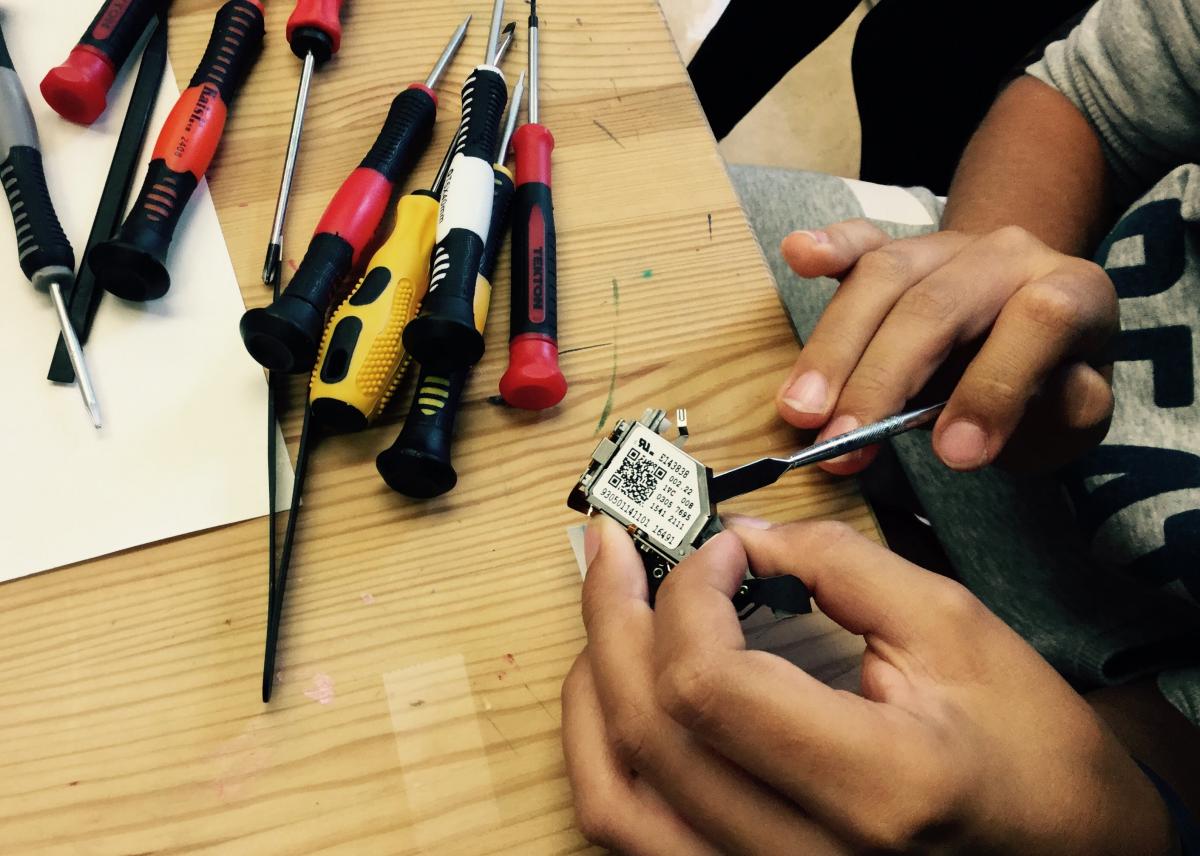 A first, essential step is looking closely—slowly observing and reflecting on the whole. One of the key requirements of a Take Apart, and one that I share with learners, is this important permission: You will not be asked to put it back together. You do not need to preserve it. Once the clock is really Taken Apart, it does not go back together, literally or conceptually. It is a plastic rain poncho that can never be stuffed back into its perfect tiny pouch. When we unpack the parts and complications of the clock—when we explore complexity—our understanding of it balloons out dimensionally.
A first, essential step is looking closely—slowly observing and reflecting on the whole. One of the key requirements of a Take Apart, and one that I share with learners, is this important permission: You will not be asked to put it back together. You do not need to preserve it. Once the clock is really Taken Apart, it does not go back together, literally or conceptually. It is a plastic rain poncho that can never be stuffed back into its perfect tiny pouch. When we unpack the parts and complications of the clock—when we explore complexity—our understanding of it balloons out dimensionally.
Permission to break things is a visceral release, and the small shock of cracking the case of a clock marks that crystal moment of transgression. “No going back now,” some learners might say, or “Is this what I’m supposed to do?” They have entered forbidden territory.
The real processing begins when learners' hands are deep in the guts of the clock and a flurry of questions and inferences rise out of their inherent curiosity. It can get wild in there, and conversations and observations help make order and meaning of what they find. I like to prompt, What do you see? What words or numbers can you find? How are things connected? How does it work to move the hands? As pieces start to come out onto the table, I ask: Sort them in a way that makes sense to you. Is it the way they fit together on the inside? Is it by size or color? What way explains the clock best?

When everything is out, when it is arranged as a representation of our understanding of the clock, it has changed irreversibly. It is broken, for sure, but it is also now physically and conceptually larger than it has ever been. Reflection can make visible how learners’ understandings of the clock and their thinking about it have grown. They can teach what they have learned, or explain a moment of surprise where what they thought they knew about the clock was upended. I often invite my students to consider the following: What was hard about taking it apart, physically or emotionally—and what does that mean? What was hard about explaining its workings? What puzzles remain?
Then finding opportunity becomes a natural next step. Often, learners will ask me if they can keep a piece of this clock. I might ask: Why this piece? What do you want to do with it? What should be thrown away, and what is just too interesting?
In the past year, the Making Across the Curriculum project at Washington International School has supported our faculty to dig into an exploration of what Take Apart practices might look like in a classroom. The curiosity and enthusiasm of students during a Take Apart is often the most obvious impact, but we are also trying to identify more subtle evidence of student understanding.
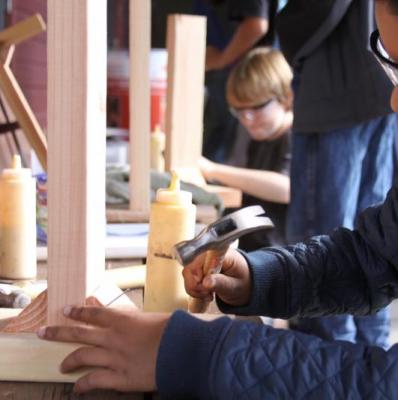
T-Stool Project
In this picture of practice essay, educators Ilya Pratt and Jeanine Harmon share a community “Design + Build” project. Fourth and fifth grade students from North Oakland Charter School and Park Day School find an opportunity to work together to build T-Stools for classrooms.

Maker-Centered Learning And The Development Of Self
Maker-Centered Learning And The Development Of Self: Preliminary Findings Of The Agency By Design Project
A White Paper Presented By Agency by Design
Project Zero, Harvard Graduate School Of Education
This White Paper, from January 2015, presents an overview of our developing work, and concludes by presenting the “big take away” from our research and by making suggestions for policymakers, educators, and other stakeholders. Along the way, we identify what we consider to be the most salient benefits of maker-centered learning for young people and, introduce some of the key concepts and resources that have emerged from our work, including the concept of maker empowerment, the importance of developing a sensitivity to design, and the three pathways that lead to these desired outcomes.
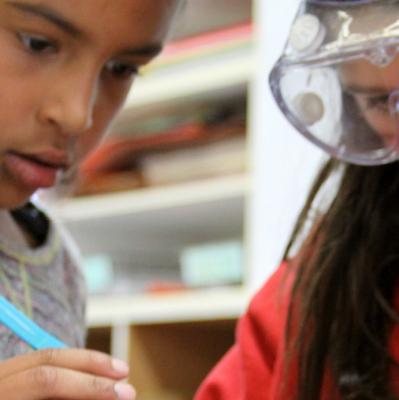
Identifying Core Outcomes of Maker and Design Thinking Education: Fostering a Sense of “I Can Do That!”
The Agency by Design team has been searching for answers to the big question: “What are the core outcomes of maker and design thinking educational experiences?” Bruce Hamren at the Athenian School’s Makers Studio has a simple answer: maker experiences provide young people with a sense of “I can do that!” But is “I can do that” enough?

Implementing STEAM within Maker-Centered Learning
In recent years, educators, administrators, parents, and policymakers have expressed a heightened interest in maker-centered learning, the incorporation of the practices of the maker movement into education. Although many have argued that maker-centered learning experiences have the capacity to increase students’ proficiency and interest in the science, technology, engineering, and math (STEM) subjects, others have suggested that maker-centered learning experiences are fertile grounds for STEAM, that is, incorporating the arts into STEM education. In this article, educational researchers Edward P. Clapp and Raquel L. Jimenez propose that the A in the STEAM acronym may stand for 3 different educational outcomes: arts learning, aesthetic education, and/or creativity, but ultimately conclude that the A in the STEAM acronym—however it is defined—is only loosely incorporated into maker-centered learning experiences.

Curiosities, Collections, and Curating: Considering Maker Portfolios
AbD researcher Jessica Ross elaborates on her role in the Open Portfolio Project by asking the question: What advice can we offer young makers as they document their making throughout their lifetimes?

Voice and Choice: Developing a sensitivity to what—and who—is not represented
Where are we coming from?
The Agency by Design framework for maker-centered learning and its accompanying practices encourage young people to pay close attention to the designed elements of the world, to deconstruct and reconstruct objects and systems, and to see themselves as participants in reimagining the world and their place within it. The designs that young people explore are not only physical. Thinking routines like Parts, Purposes, Complexities, Parts, People, Interactions and Parts, Perspectives, Me have been used by young people and their educators to look closely and critically at systems of governance and power and the various stakeholders involved in these systems. For example, educators from Agency by Design Oakland, a network established by participants in the AbD Origin Project, apply the AbD framework to support equity, look at power structures, and foster students’ critical thinking.
In collaboration with educators in the broader Agency by Design network and those participating in the Making Across the Curriculum project at Washington International School, the AbD team at Project Zero has been developing new tools and practices to support young people to take an even more critical approach toward design and making in order to both interrogate—as well as embody—design choices that challenge systems of oppression, representation, and power.
Design is not neutral
How might we support young people to develop a critical consciousness when looking at, interacting with, and participating in the designed elements of the world?
Design is not neutral. Making is not neutral. Every choice that a designer or maker makes is made in the context of a set of beliefs and ideas about the world. Design justice, a growing field in the realm of design, focuses on the ways that design perpetuates systemic oppression by looking closely at who benefits from design, who is harmed, and how the design of objects and systems might more equitably distribute design’s “benefits and burdens.” Along the lines of design justice, in pedagogic terms, are notions that creativity is not neutral and that classrooms, specifically classrooms that emphasize creativity, privilege dominant culture’s social and cultural perspectives. With forces of systemic oppression built into the very structure of design and concepts of what constitutes creativity, it is critical to support young people to recognize the importance of questioning design and how the decisions of the makers they encounter relate to and reflect representation and power.
Sensitivity to design also means a sensitivity to what is not built-in
Agency by Design defines Sensitivity to Design as "learning to notice and engage with one's physical and conceptual environment by looking closely and reflecting on the design of objects and systems, exploring the complexity of design, and finding opportunity to make objects and systems more effective, more efficient, more ethical, more beautiful, or more __________."
Perhaps just as important as inviting young people to look closely at the designed elements of the world and report what they notice is supporting them to question what they do not see and why. Cultivating a capacity and inclination to critically consume art, media, and other elements of material culture is a first, or early, step to understanding the ways that design empowers, oppresses, and often reproduces existing power structures. As young people—and all of us—engage with the inherent stories and perspectives of the elements of material culture we encounter, it is important that we are equipped with a critical lens and sensitivity to ask questions like: What information is missing? Whose voices are represented, whose are not, and why?
Voice and Choice, a protocol
Voice and Choice is a protocol for looking critically at a piece of content, considering perspectives and representation, and then redesigning or reimagining that content from one’s own perspective. “Content” might refer to a poem, work of art, historical essay, social media post, architectural structure, news article, piece of digital media, environmental plan, etc.
Learners begin by looking closely at a piece of content and then they do the following:
- Consider the context: Where was the content made? When was it made? Who made it? What else was going on at this place and time?
- Maker choices: What choices do you think the maker(s) made when designing this content? Why do you think they made these choices?
- Voices present: Whose voices are present in this content? What perspectives are represented?
- Voices missing: Whose voices are missing from this content? What perspectives are not represented? Why do you think that is?
- My voice: What’s your voice? What perspectives do you bring to this content?
- My choice(s): What could you do to redesign or reimagine this content to better represent your perspective(s)? Why? How might it look differently?
- Interact: Share your redesign with a peer or peers. Ask them to answer the questions: Whose voices and perspectives do they see represented in this content? Whose voices and perspectives do they think are missing? Ask yourself: is there anyone else you might share your redesign with to get a different perspective?
- Reflect: Now that you have received feedback, look closely at your redesign and consider whose voices and perspectives are missing from the redesigned content. If the feedback from your peer(s) is not what you intended or expected, is that okay with you? If not, how might you continue to redesign this content? Finally, and importantly, ask yourself: what do you think the maker(s) would think of your redesign?
Download the full protocol along with suggested practices for using the protocol. Download the Voice and Choice Learner Workbook, co-created by Julie Rains. Below are three snapshots from the Learner Workbook.

Considering the Role of the Arts and Aesthetics within Maker-Centered Learning
Throughout the past decade, the maker movement has become a cultural force, and maker-centered learning has grown in popularity. At the same time, the arts have remained marginalized throughout the educational sphere and limited scholarship recognizes the connections between the maker movement and arts learning. To explore this connection, Agency by Design researchers Sarah May and Edward P. Clapp conducted a thematic analysis of interviews with maker educators and thought leaders, and discovered that these educators rarely used arts and aesthetics-related terminology when speaking about the benefits of maker-centered learning. In this article, they suggest that establishing a language of aesthetics in maker-centered learning might help arts and maker educators see themselves reflected in one another’s work.

The Maker Mind: Jen Ryan at TEDxDirigo
Agency by Design researcher Jen Ryan explores some of the central ideas from the framework at TEDxDirigo Generate.

Collaborative Partnerships Through Systems Thinking
Educator Tatum Omari examines the system of educator collaborations and partnerships.
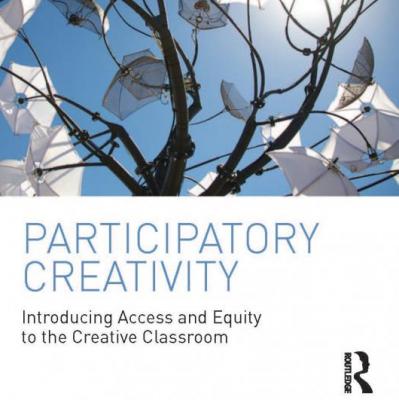
Participatory Creativity: Introducing Access and Equity to the Creative Classroom
Participatory Creativity: Introducing Access and Equity to the Creative Classroom presents a systems-based approach to examining creativity in education that aims to make participating in invention and innovation accessible to all students. Moving beyond the gifted-versus-ungifted debate present in many of today’s classrooms, the book’s inclusive framework situates creativity as a participatory and socially distributed process. The core principle of the book is that individuals are not creative, ideas are creative, and that there are multiple ways for a variety of individuals to participate in the development of creative ideas. This dynamic reframing of invention and innovation provides strategies for teachers, curriculum designers, policymakers, researchers, and others who seek to develop a more equitable approach towards establishing creative learning experiences in various educational settings.

Maker Empowerment Revisited
Agency by Design Principal Investigator Shari Tishman takes a dispositional approach to redefining “maker empowerment.”
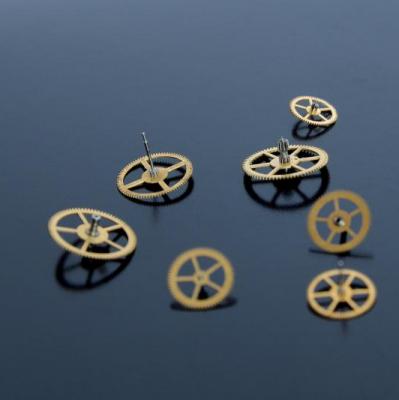
Presenting a Symptomatic Approach to the Maker Aesthetic
For the past decade, the maker movement—a rising interest in working with one’s hands within collaborative, interdisciplinary environments that combine a variety of tools and technologies—has been on the rise throughout the United States and around the world. Incorporating the practices of the maker movement into the educational sphere has become of increasing interest to educators, administrators, parents, and policy makers. While there are many important outcomes that derive from maker-centered learning, the aesthetic dimensions of this work may be disorienting to educators with traditional perspectives on aesthetic education. In this theoretical essay, Agency by Design researcher Edward P. Clapp considers the aesthetic dimensions of projects developed in maker spaces and maker-centered classrooms by presenting a symptomatic approach to the maker aesthetic.
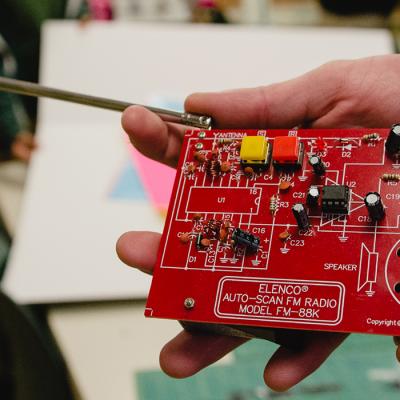
A Culture (and Economy) of Making and Sharing
The maker movement is no doubt still trending. But what’s driving this resurgence in the inclination to make? And is it a part of a larger socio/economic shift to a shared, participatory culture?

Reconsidering Failure in Maker-Centered Learning
Agency by Design researcher Edward Clapp questions the use of the word failure in maker-centered learning, especially as making activities begin to find their way into schools where “failing” has serious consequences.
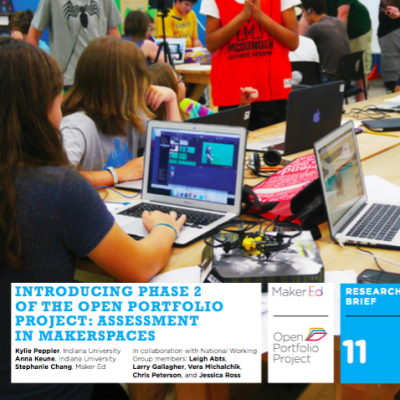
Open Portfolio Project Research Brief Series
Open Portfolio Project Research Brief Series (Phase 2)
MakerEd’s newest Research Brief Series, published in early 2018, takes a deep look into the motivations, implications, and practices necessary to situate open portfolios as a means of assessment in maker-centered learning environments. The findings and briefs also draw on our analysis in the first phase of work, continuing to reveal the many facets of portfolio implementation and assessment. Agency by Design researcher Jessica Ross was a collaborator on the brief series and member of the Open Portfolio Project's National Working Group.

Exploring the Role of the Arts in Maker-Centered Learning Experiences
Participants at the Arts Education Partnership National Forum consider the role of the arts in maker-centered learning experiences.

A TEDx Talk about the Maker Mind: Why Having a Sensitivity to Design Matters
Agency by Design project manager Jen Ryan describes her experience discussing the “maker mind” at TEDxDirigo.
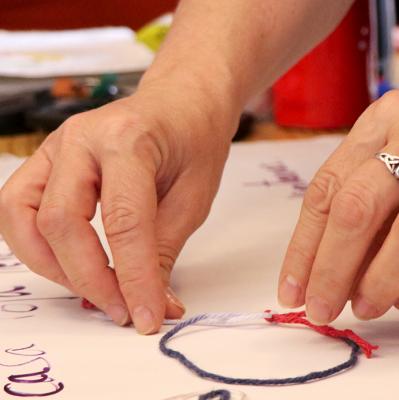
Developing Professional Learning Communities to Support Maker-Centered Learning
AbD Senior Practitioner Jessica Ross discusses the role of professional learning communities in supporting the work of maker-centered educators.
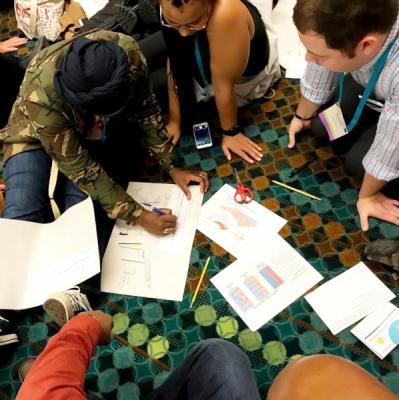
Lesson Plan: Take Apart Racism: Using Maker-Centered Practices to Break Down Systems of Oppression
This lesson plan is based on a workshop titled “Taking Apart Racism: Using Maker-Centered Practices to Break Down Systems of Oppression,” led by Jaime Chao Mignano and Mark Perkins at the National Association of Independent Schools People of Color Conference (PoCC). To learn more, read the field notes post, Taking Apart to Build Stories of Change.

STEAM Not Stickers: Creating a Meaningful Role for the Arts in STEM Learning
Are American schools adequately preparing students with the skills and experiences needed to become global leaders tomorrow? In recent years, this central question has motivated a renewed interest in the sciences, technology, engineering, and mathematics (STEM) disciplines. Despite national support for STEM education, there are many who view the arts and arts-based approaches to learning (which are often cited as instrumental in fostering creativity) as essential for bringing an aspect of innovation to STEM education. Referred to as STEAM, the trend toward infusing the STEM disciplines with the arts has been gaining momentum for nearly a decade. In this essay, Agency by Design researchers Edward Clapp and Raquel Jimenez explore how the arts may be incorporated into STEM and maker-centered learning experiences.
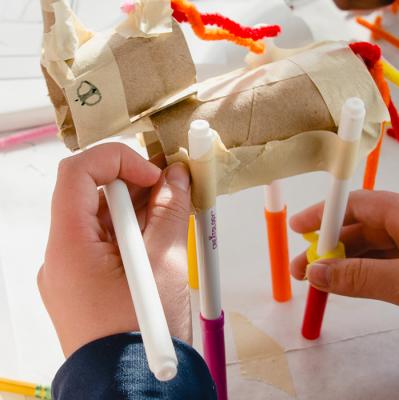
Tinkering Towards a Definition of Tinkering
How do you define tinkering? In this post, Agency by Design principal investigator Shari Tishman tinkers towards a definition of tinkering that considers standard text book definitions, examples from real life tinkerers, and a consideration of the “symptoms” of tinkering.
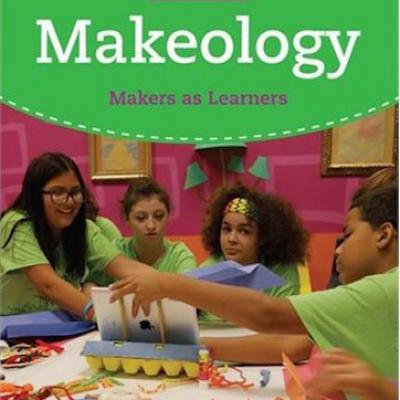
Makeology: Makers as Learners
Makeology introduces the emerging landscape of the Maker Movement and its connection to interest-driven learning. While the movement is fueled in part by new tools, technologies, and online communities available to today’s makers, its simultaneous emphasis on engaging the world through design and sharing with others harkens back to early educational predecessors including Froebel, Dewey, Montessori, and Papert. Makers as Learners (Volume 2) highlights leading researchers and practitioners as they discuss and share current perspectives on the Maker movement and research on educational outcomes in makerspaces. Each chapter closes with a set of practical takeaways for educators, researchers, and parents.
Chapter 3 - Making, Thinking, and Understanding: A Dispositional Approach to Maker-Centered Learning by: Jennifer Oxman Ryan, Edward P. Clapp, Jessica Ross, and Shari Tishman

Maker Movement in the Media
Agency by Design researchers have undertaken a review of scholarly literature to further our understandings of the various concepts connected to our study.

How Can Understanding What We Value as Educators Shape What We Assess in Our Classrooms?
What do we want our learners to be like when they leave our classrooms at the end of the year? What does authentic learning look like in a maker-centered classroom? Your response to these questions might be an indicator of what type of learning you value as a teacher. Inspired by Carlina Rinaldi and her writing on the relationship between documentation and assessment, we used these questions to identify what types of learning or dispositions teachers value most within their contexts. Think of it as a lens for looking at learning. What we quickly realized is that the values educators bring to their work have implications connected to assessment.

Framing a Value-based Approach to Documentation and Assessment for Maker-Centered Learning
Synthesizing recent conversations between AbD and the Oakland Leadership Team, AbD researcher Andrea Sachdeva proposes a values-based stance on documentation and assessment in maker-centered learning.

Introducing the New Agency by Design Website
Welcome to the new Agency by Design website! Because the new website is so rich with content and features, we think it might be helpful to take you on a tour to get a sense of all it has to offer. The new site boasts 29 educator tools and practices that accompany the Agency by Design framework for maker-centered learning, featured documentation and assessment resources highlighting the most recent phases of work, Agency by Design media and publications, and project and funder pages to highlight the Origin Project, Early Childhood in the Making, and Making Across the Curriculum. The video below walks you through the elements of the site and gives an overview of each page.
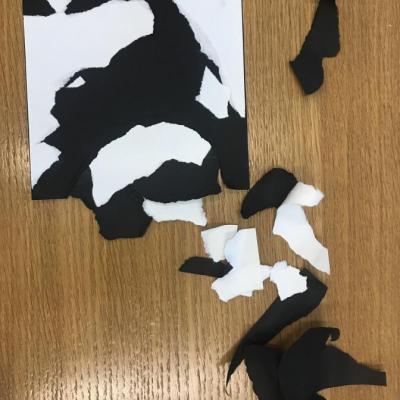
Complicating STEAM: A Critical Look at the Arts in the STEAM Agenda
This entry offers a critical perspective of the role of the arts within the popular STEAM agenda. Most loosely defined, STEAM can be understood as incorporating the arts into the STEM (science, technology, engineering, and mathematics) acronym for the purpose of introducing a focus on art and design into these four subject areas. This entry first questions what the A in the STEAM acronym actually represents. The entry then argues that a focus on any discrete set of disciplines prioritizes some domains of practice, while overlooking others. The entry goes on to encourage a more distributed approach to pedagogical practice that is less about establishing catchy acronyms that privilege some disciplines over others – and more about supporting young people and adults in becoming multimodal learners capable of making connections between and beyond the disciplines.

JusticexDesign: Developing a Sensitivity to Designed Injustices
Banner image courtesy of Agnes Gómez and her 5th grade students at Sacred Heart School (School year: 2019-2020).
Agency by Design and JusticexDesign (JxD) extend great appreciation to Jaime Chao Mignano for being a thought partner in conceiving of the JxD project as well as to JxD Origin Educators for their invaluable contributions to this work: Agnes Gómez, Angélica Guerrera, Anne Leflot, Ashley Beck, Gerald D. Smith Jr., Maria Fernanda García, Mark Perkins, Nick Loewen, and Sonia Chintha. Thanks also to educators Julie Rains and Lisa Yokana, who participated remotely in trying out some JxD tools during its pilot year. Sincerest appreciation to Edward P. Clapp and Jim Reese, as well as the Washington International School, for their generous and ongoing support in making JxD possible.

Truth and Historical Amendment: Critical Mending in the Classroom
Jaime Chao Mignano is a Senior Practitioner Specialist on the JusticexDesign (JxD) project, and an ongoing leader in the project's conception and development, including developing tools and supporting educators to apply the emerging JxD framework in their contexts.
We find ourselves in a thorny historical moment, in the United States and around the world. Like my colleagues on the JusticexDesign project—and like many educators—I wonder: How will we support our students in deepening their understanding of the world around them and exploring the complex interplay of histories we are taking part in? In the US, we are debating the fate of American monuments, the legacy of American founders, and the impact of America’s own super story on the lived experiences of its people. How might we offer a path of agency to our students that champions historical honesty? And as we guide our students in considering colonial legacies, migration crises, and global economic injustice, what are some ways we might actively value the voices of communities adding their own truth to a contested history, even at terrible risk?
Artist Titus Kaphar’s work offers a rich model, pieces “that are honest, that wrestle with the struggles of our past but speak to the diversity and the advances of our present.” WIS History teacher Nora Brennan, a colleague in Agency by Design's Making Across the Curriculum project, and I had been struck by Kaphar’s 2017 TED Talk, “Can Art Amend History?” He asks, with his own children in mind, “What is the impact of these kinds of paintings on some of our most vulnerable in society, seeing these kinds of depictions of themselves all the time?” Kaphar concludes by urging us to “amend our public sculptures, our national monuments” in order to expand and deepen our historical narrative.
In the fall of 2018, Nora took her history class to visit the Titus Kaphar collection in the “UnSeen: Our Past in a New Light” exhibit in the National Portrait Gallery. This experience was clearly powerful for students—we could sense that Kaphar’s artworks were shifting their gazes, pointing them to an actively unfolding dialogue on American history. Nora knew she wanted her students to connect more deeply to Kaphar’s philosophy of historical amendment. She combined this art exhibit and the history lessons she was teaching on the Civil War and Reconstruction as the foundation to challenge students to research a Civil War monument and reimagine it.
At the same time, Nora knew it was important to contextualize this project in the very active conversation in the U.S.—and around the world--about monuments and public memory. The controversy around Civil War monuments was and is a real current event—many city and state governments have been taking steps to address the symbolic presence of historical racial terror embedded in public spaces by tearing down monuments, renaming streets and buildings, etc. We wanted students to situate their thinking within these substantive critiques - not to attempt reconciliation but to explore their own perspective.
Nora drew on the Agency by Design framework to build her students’ sensitivity to the design of monuments and portraits. She knew that historical artworks can both express and obscure, offering us complex legacies that we can guide students in unpacking and probing. We wondered what maker empowerment might look like as students approach a portrait of Robert E. Lee or a statue of John. C. Calhoun.